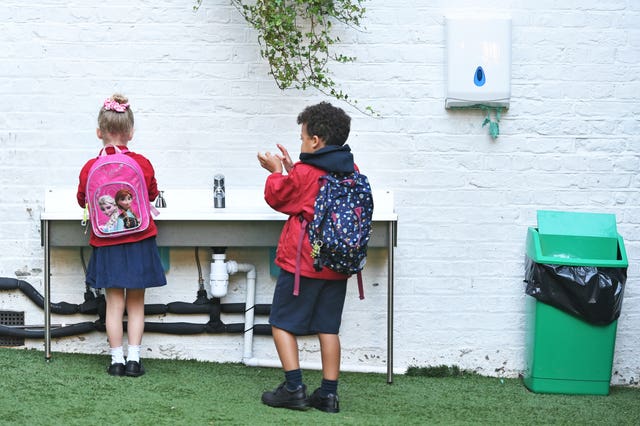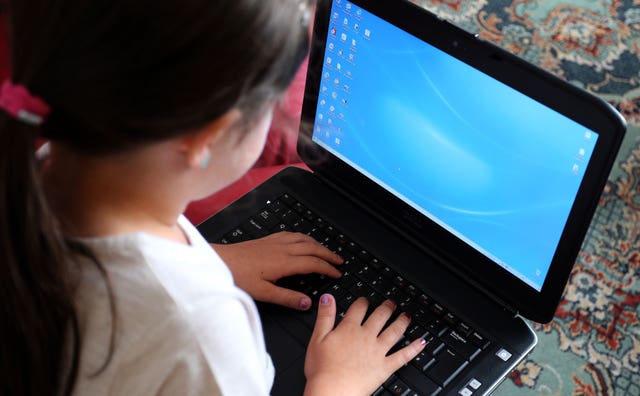MPs have been told that strong mitigation measures are needed in schools to stop a “huge surge” in coronavirus transmission, as fears were raised that March 8 could be too soon for them to start to reopen.
Children aged between 12 and 16 years old are seven times more likely to bring infection into a household than an adult, and they are two times more likely to infect contacts in a household, MPs on the All-Party Parliamentary Group (APPG) on coronavirus heard.
Dr Deepti Gurdasani, epidemiologist and senior lecturer at Queen Mary University of London, told the APPG the level of exposure they have is “so high so overall they contribute a lot to the transmission within schools and transmission within the community”.
Despite repeated Government statements that disrupting education is a last resort, “unfortunately all the policies we have put in place have directly led to school closures”, Dr Gurdasani said.

She added: “It is very clear that if we don’t change this, if we don’t put mitigation measures in schools, as soon as we open schools we are going to see a huge surge in transmission.
“The only way to keep schools open, and if you want to prioritise that, is to make them safer.”
The warning came as Sage member Calum Semple said there were still “very high levels” of community transmission, and that March 8 could be too soon to reopen schools.
Earlier he told BBC Radio 4’s Today programme: “The challenge here is that if you do open schools and everything else stays closed, then clearly you will get some increased transmission associated with schools as a whole and with the teenagers.
“And that will add to the problems of the so-called R number, so we really do need to get transmission down a lot further, in my opinion.”
Professor Anthony Costello, of University College London’s Institute for Global Health and a member of Independent Sage, told the APPG there are “persuasive” arguments for teachers and nursery assistants to be vaccinated as a priority.
He said: “They are the only group that I know of who will spread this amongst age groups because all the others will not be in contact with children.
“They are the only group of workers who cannot use social distancing and masks when they are at work in order to do their work. We are also asking them to go back to work before many other groups without protection.
“We want to keep teachers in work and not to be off work, absent with the infection or self-isolating, so a vaccination early would be the best way to reduce it.”
Prof Costello also said he believes the opening of schools should be based on “solid criteria of the risk from local community prevalence” and there should be a proper plan to support all children who need access to online learning, even if it means that some schools have to stay shut longer than others.

The proportion of pupils in school in England has risen in the past week of lockdown and this has prompted concern among school leaders’ unions about infection rates.
Overall, 15% of state school pupils were in class on January 28, up from 14% the week before, according to figures from the Department for Education.
More than a fifth (22%) of primary school pupils were on-site last week, which is a 21% rise on the week before, while 5% of secondary school students were in class – the same as on January 21.
Pupils in schools and colleges in England – except children of key workers and vulnerable pupils – have been told to learn remotely during the lockdown.
Approximately 850,000 children of key workers were in attendance last week, up from 813,000 on January 21, which represents 70% of all pupils then at school.
An additional 51,000 laptops and tablets have been delivered or dispatched by the Government to help with remote learning in the past week.
Paul Whiteman, general secretary of school leaders’ union NAHT, said: “In planning for a return of more pupils to face-to-face education, Government should scrutinise the infection rates and transmission within the minority of schools and communities where significant numbers of pupils and parents continue to meet daily.
“Understanding the level of risk presented by higher numbers of pupils in school would appear key to planning for a safe and sustainable return to school for all pupils.”
A Department for Education spokesman said: “We are taking every possible measure to reduce Covid cases and the protective measures that schools have been following throughout the autumn term continue to be in place to help protect staff and students, while the national lockdown helps reduce transmission in the wider community.”




Comments: Our rules
We want our comments to be a lively and valuable part of our community - a place where readers can debate and engage with the most important local issues. The ability to comment on our stories is a privilege, not a right, however, and that privilege may be withdrawn if it is abused or misused.
Please report any comments that break our rules.
Read the rules here